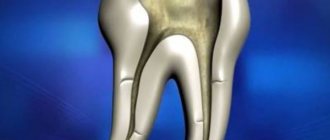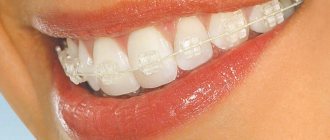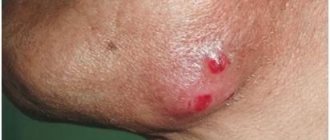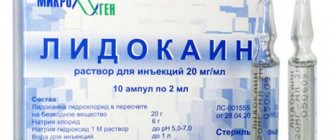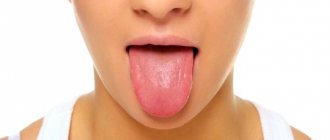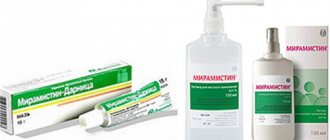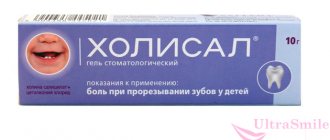24.11.2019
An allergy is an increased sensitivity to certain substances that causes painful symptoms. An allergy to a filling is quite rare, but still, each human body is special, and can react differently to a filling composition that is foreign to it. Any material introduced into the human body from the outside can cause a toxic reaction.
How does an allergy to a filling manifest itself and what can it be confused with?
An allergic reaction to a filling is manifested by redness and swelling of the gums, aching pain, and an atypical taste in the mouth. But these symptoms may indicate the consequences of treatment (especially if it was carried out with the removal of a nerve or surgical opening of the gum), and an allergy caused by an anesthetic medication. In these cases, the unpleasant sensations disappear within a few days, usually two or three, less often a week.
If pain, redness and swelling do not subside over a longer period of time, this indicates an allergy to some component of the filling material. Symptoms may subside when taking an antihistamine (anti-allergy) drug, but then appear again - because contact with the allergen does not stop. Moreover, the symptoms worsen, possibly an increase in body temperature, the appearance of a rash and itching, and the spread of swelling to the facial area.
Allergy symptoms
A common problem that dental visitors encounter is an allergy to dentures.
The symptoms that appear in this case are as follows:
- body temperature rises;
- the presence of a metallic taste in the mouth;
- lack of sensitivity;
- the appearance of a rash on the skin;
- symptoms resembling bronchial asthma;
- swelling on the tongue, lips, gums.
There is pain in the mouth and increased salivation.
In especially severe cases, Quincke's edema can occur, which in turn poses a danger to human life.
Which components are allergens?
Allergies usually appear due to the fact that prostheses contain certain components.
The body primarily reacts to metal components. The thing is that in order to reduce the cost of devices and make them more accessible, other chemical elements can be added: cobalt, nicol, chromium, copper, etc.
The listed elements begin to react with the body, as a result of which the symptoms described above begin to appear. Metal with such impurities is often added to clasp dentures, dental bridges or inexpensive crowns.
Chromium is a substance to which you may be allergic
Interesting!
Precious metals, such as gold, are not capable of causing allergies. However, due to the high cost, many patients simply cannot afford them. This is why most people decide to install inexpensive dentures containing allergic components.
Material such as titanium does not cause allergies, this has been proven more than once. It is especially good because the body gives almost no reaction to it. Ceramics have similar properties, as well as products made…
RECOMMENDED VIDEO TO WATCH:
Allergy to temporary filling
A temporary filling is installed for a period of several hours to 2-3 weeks, mainly for diagnostic purposes - to determine how infected the pulp (neurovascular tissue of the tooth) is. If pain persists after placing the filling, then the dental nerve is inflamed and is removed. Also, a temporary filling can be intended to fix a medical lining in the dental cavity.
For temporary filling, dentists use mineral cements of various compositions, polymer one-component pastes, and dentin paste. Each component of the materials can cause an allergy, although the likelihood of this is very, very small. In any case, when replacing the temporary filling with a permanent one having a different composition, contact with the possible allergen will stop.
Allergy to permanent filling
A permanent filling, if done well by a dentist, will last for many years and even decades. A wide variety of materials are used for fillings - from phosphate cement, usually used in the provision of free dental care, to the most modern light-curing composites of complex composition. And not a single filling material, cheap or expensive, unfortunately, excludes allergies. Despite the fact that entire corporations are trying to develop a completely hypoallergenic composition for fillings, the ideal does not yet exist. The individual reaction of the body is unpredictable.
Types of materials for fillings
What specific components can cause an atypical reaction in the body? The material that often causes allergies is amalgam. It is an alloy of mercury with silver and other metals, now used very rarely, despite its strength. This filling material has lost its position not only because of toxicity - contrary to popular belief, amalgam does not release dangerous amounts of mercury into the human body, it is quite safe. But too many allergic reactions to it have been recorded, and an atypical reaction does not appear immediately (the so-called “delayed” symptoms), but an allergy to metals is one of the most severe. In European countries, the use of amalgam in dentistry is prohibited.
Gold fillings are also a metal alloy; an allergy to such a filling is possible, but it is extremely rare.
A filling made of acrylic plastic (methyl acrylate), a material that not so long ago was considered the newest alternative to metals. But now acrylic plastic is rarely used by dentists, it is short-lived and toxic, and in terms of the number of allergic reactions it surpasses all filling materials - approximately a third of patients had an atypical reaction to this material.
Chemical-curing composites are obsolete, developed in the 70s of the last century, but, along with cement fillings, they are used in free dentistry. The composition of synthetic resins and quartz powder is mixed immediately before installation in the oral cavity and hardens within a few minutes. Resin, which is an artificial material, is a strong allergen.
Light-curing (photopolymer) filling is a composite that hardens under an ultraviolet lamp. This material, which appeared in dentistry relatively recently, consists of a polymer, a mineral filler (glass ceramic or silicon dioxide) and a binder. Manufactured to meet hypoallergenic requirements. The American Dental Association has recorded only a few dozen cases of allergies to light fillings - this is a tiny percentage of the number of patients treated.
Ceramic (porcelain) filling. Ceramics is considered completely hypoallergenic, or, as cautious doctors say, a material to which no allergies have been observed. But a ceramic filling, or inlay, is glued to the tooth with adhesive glue and fixed with composite cement, and these materials are possible allergens.
Symptoms of an allergy to a dental filling, treatment
The main symptom of an allergic reaction to filling material is local reactions, such as swelling of the gums, sharp or aching constant pain at the site of tooth treatment, and redness. In addition to local symptoms, symptoms common to an allergic reaction may occur, such as skin rashes, itching, and dry skin.
Treating allergies to filling material at home is not effective. Contacting a medical specialist will help identify the cause of the allergy, if any, through tests, tests, and consultations with specialists. If an allergy to dental materials is confirmed, the dentist will replace the previously installed filling with a less allergenic one. In addition, to relieve local symptoms, medications will be prescribed to relieve irritation, swelling and pain. Prescribed comprehensive treatment with medications and compliance with all preventive measures will help avoid a recurrent allergic reaction in the future.
allergiyainfo.ru
It all started with the fact that in April last year, as I said above, I put this filling in, a month later I had a runny nose in the morning, sneezing, a flu-like state, and it lasted half an hour to an hour. Then everything went away until the next morning. I was treated with antibiotics ciprolet and amoxacillin, then I took a nasal swab test for sensitivity to antibiotics and the best result showed ofloxin. After taking the second pill, I experienced my first shortness of breath and wheezing. They called an ambulance and I was admitted to pulmonology. There, doctors could not decide on a diagnosis of bronchitis or asthma. He was treated for 10 days with ceftriaxone 2 times a day and discharged. The next day I was admitted to the neurological department with severe pain in my back and right leg, they treated me with pentoxifylline and vitamins B6 and B12, which also caused me shortness of breath. The pain did not go away. I couldn't walk because of the pain. She underwent computed tomography and magnetic resonance imaging, discovered protrusion of the L3-L4 L4-L5 discs and a median hernia of 0.5 cm in the lumbosacral region. The treatment didn't help, it only got worse. And so periodically throughout this time I was in the hospital. Then I had an appointment with a professor, he prescribed Actovegin, I took the drops for a whole month and the pain stopped. The doctors said that with such protrusions there could be no pain like mine, but they could not determine the cause of my condition. In December, I was again admitted to the hospital with a temperature of 40. They did a CT scan of the head and, with a diagnosis of pansinusitis, sent me for punctures of the maxillary sinuses. The punctures were done for 3 days. After this, the sneezing, runny nose and fever went away. Throughout the year, as I wrote above, the levels of leukocytes (up to 16), fadiatope, reactive protein and immunoglobulin were elevated, which indicates that the allergic background is also increased. I was examined at the allergy center for parasites, for Cushing's syndrome, since there were stretch marks on my body, for cortisol, for hormones, for HP infection to exclude the option of HP pseudo-allergy. Everything is fine with me. She also took tests for respiratory, food and drug allergens. There are only drug allergies to vitamins B and C and to non-steroidal pain relievers such as declofinac, aspirin, but the specificity of the test showed 65%. Now doctors diagnose either atopic bronchitis or asthma. A week ago I completed a course of dexamethasone, ketotifen, took secrazol, I’ve been taking Seretide for the second month now, and I’ve been taking 10 mg of asmenol for a year now. There was severe deterioration, coughing and shortness of breath, but after dexamethasone and increasing the dosage of Seretide from 500 to 1000, I felt better. Today I saw a doctor; after listening to my lungs, she said that there was no wheezing. At that moment when allergolysis of the body began, nothing new except tooth filling was happening either in my environment or in my body.
www.medkrug.ru
- General issues
- Allergy to dental anesthetics, differential diagnosis
- Allergic and non-allergic reactions to components of general anesthesia
- Allergic reactions to drugs used after dental surgery
- Allergy to implanted materials, differential diagnosis
- Rare variants of oral angioedema
- Prevention of allergies to dental drugs and products
- Literature
General issues
Dentistry uses a wide variety of injectable and oral medications and implantable materials that remain in the mouth for many years.
Medicines used in dentistry:
- local anesthetics,
- general anesthesia agents,
- non-steroidal anti-inflammatory drugs used for pain relief during the period after dental surgery,
- antibiotics for the prevention of complications after dental interventions.
These drugs can cause true drug allergies, most often developing as type I allergic reactions, but other mechanisms are also possible.
Often during dental interventions, metal and polymer foreign bodies are implanted into the oral cavity, which cause contact allergies, most often occurring in type IV allergic reactions.
A number of general anesthesia drugs can also cause the phenomenon of pseudoallergy, in which the release of mediators of allergic inflammation is caused directly by the drug without the participation of the immune system.
Allergy to dental anesthetics, differential diagnosis
Local anesthetics are used very often for pain relief during dental procedures.
According to the literature, a true allergic reaction to local anesthetics develops, as a rule, of the reagin type. Less commonly, it develops according to the immune complex mechanism of allergic reactions.
In addition, local anesthetics tend to cause pseudoallergic reactions by activating the kinin system with the development of angioedema (1).
Allergic sensitization is possible both to the drug itself and to preservatives or other additives to the drug, for example, sulfites (6).
Please note: if you feel nervous, have arrhythmia, trembling and restlessness, these may be signs of systemic anaphylaxis
Sensitization to local anesthetics is acquired both during medical interventions with their use, and during the independent use of local ointments, rectal suppositories, remedies for stomach pain and other drugs containing anesthetics.
In addition, many local anesthetics can cause a cross-allergic reaction with sulfonamide antibacterial drugs, antidiabetic sulfurea drugs, and diuretics (2).
Within the group, local anesthetics, based on their chemical origin, are divided into ether and amide. While allergies to ether anesthetics are common, sensitization to amide anesthetics is less common (2).
Cross-allergic reactions between groups are rare, but simultaneous sensitization to both groups of drugs has been described (5).
Clinical manifestations of a reaction to anesthetics are most often skin rashes of the urticaria type, toxic-allergic reactions with generalized macular and papular rashes. In severe cases, reactions are possible with the addition of vesicular and bullous rashes, hyperthermia, damage to internal organs and the central nervous system.
The most severe manifestations are the development of anaphylactic shock with a drop in blood pressure and disturbances of consciousness, the development of life-threatening conditions, as well as Stevens-Johnson syndrome and Lyell's syndrome (1).
The development of allergic or other adverse reactions to anesthesia is believed to be the most common cause of sudden acute illness and death among healthy adults (6).
Allergy to local anesthetics is diagnosed by an allergist-immunologist who carefully collects anamnesis. The doctor finds out all previous allergic reactions to medications and other allergens that the patient may encounter in a medical facility. For example, latex, as well as all medications taken by the patient.
If possible, the doctor analyzes copies of anesthesia protocols for past interventions and the presence of allergic diseases in the patient.
Diagnostics are carried out - skin prick tests and intradermal tests are used to a limited extent abroad; in Russia, in some institutions, the test for inhibition of natural emigration of leukocytes is used to a limited extent, but the effectiveness of this test is ambiguously assessed by specialists (1, 6).
Laboratory diagnostic methods include the determination of specific IgE to drug allergens and the test for specific release of tryptase from mast cells (6).
However, the accuracy of these diagnostic tests is low, since the allergic reaction may not be to the drug itself, but to the products of its transformation in the liver. Sensitization to the drug may occur in the time interval between the diagnostic test and the subsequent dental procedure.
Diagnosis is complicated by the above-mentioned possible allergy to the excipients in the drug and a number of other reasons (6). The history of the reaction to anesthesia should be carefully analyzed.
Symptoms of systemic anaphylaxis:
- anxiety,
- tremor,
- pallor,
- heart rhythm disturbances.
These disorders may be associated with the therapeutic effect of adrenaline, which is often found among the excipients in the drug. Also, disturbances may occur due to the effect of ether and amide anesthetics on heart rhythm (a number of local anesthetics, adapted for systemic administration, are used as cardiac antiarrhythmic drugs).
We should not forget about the influence of stress experienced by the patient before the upcoming painful dental procedure (4).
Swelling in the oral cavity, which may be mistaken by a dentist for angioedema, may actually be the result of an inflammatory process caused by the disease itself or associated with surgery.
Therefore, local anesthetic cannot be ruled out based on clinical symptoms seen by the dentist and laboratory test results, which may be false positive.
After a reaction to anesthesia, a patient should be consulted by an allergist-immunologist. Provocative tests currently allow one to definitively establish or exclude the presence of an allergy to an anesthetic (6).
Allergic and non-allergic reactions to components of general anesthesia
The clinical manifestations of allergic and pseudoallergic reactions described above are also possible when general anesthesia is used for extensive and very painful dental procedures.
True allergic reactions can be caused by many drugs in anesthesia, primarily neuromuscular impulse blockers (N-cholinergic blockers).
Sensitization to these drugs is possible due to cross-allergy to the components of hygiene and cosmetic products and surfactants in detergents, therefore, a qualified history taking by an allergist-immunologist is important for making a diagnosis.
To diagnose allergies to these drugs, skin prick tests and intradermal tests are often used abroad.
Provocative tests also provide a definitive answer about the presence or absence of an allergy (6).
Opioid analgesics rarely cause true allergies, but have the properties of pseudoallergens due to their histamine-limiting effects and activation of the complement system (1).
Allergic reactions to drugs used after dental surgery
Non-steroidal anti-inflammatory drugs prescribed by the dentist to relieve pain after dental surgery and stop the action of local anesthesia can cause a true allergy or exacerbation of aspirin-induced respiratory disease. This may manifest itself as an attack of bronchial asthma or generalized urticaria and angioedema (1, 2).
Antibiotics prescribed to prevent complications can cause true allergic reactions of varying severity.
Specific laboratory diagnostic methods (determination of specific IgE, specific release of tryptase) are also unreliable.
Skin tests (prick tests and intradermal tests) have been developed only for beta-lactam antibiotics—penicillins, cephalosporins, carbapenems, and monobactams (1, 6).
Allergy to implanted materials, differential diagnosis
Many dental interventions are accompanied by the implantation of foreign bodies into the oral cavity that can cause contact allergies. These include dental fillings, dental implants, dentures, and malocclusion treatments.
To establish a diagnosis of allergy to metals of implants and dentures, a patch test with contact allergens is performed
Metals, their alloys and chemical compounds can often cause a delayed reaction, and polymeric compounds can also cause an IgE-mediated reaction (11, 12).
The phenomena of contact dermatitis on metal components of dentures were first described in 1966 by Foussereau and Langier.
What to do if you suspect an allergy?
Do not self-medicate, do not use traditional medicine methods that are useless in this case. Constant exposure to an allergen can cause serious complications.
If pain and swelling persist, consult a dentist and rule out the possibility of an inflammatory process associated with dental intervention. If the dentist, after examining the oral cavity, confirms that the treatment was carried out correctly and the symptoms are not related to the manipulations performed, it is necessary to visit an allergist-immunologist to take a test to sample the filling material used for treatment and to select an alternative material.
Preventing filling allergies
The best protection against an allergic reaction to a filling is caries prevention. Regular oral care, proper brushing of teeth, the use of toothpicks and dental floss to remove food debris in places inaccessible to a brush - simple and well-known rules that can not only help you look beautiful, but also avoid dental intervention, and therefore possible allergic reactions to fillings.
Category Dental filling Posted by Mister stomatolog
Types of reactions to filling material
An allergic reaction is the body’s sensitivity to various substances (allergens), which causes negative reactions.
In this condition, the body produces antibodies that reduce or increase susceptibility to the allergen. But, despite the body’s fight against allergens and the use of only high-quality materials in dentistry, an allergic reaction can still occur.
Swelling of the face after filling
Today, the following types of allergic reactions to materials used in the dental field are distinguished:
- toxic;
- carcinogenic;
- teratogenic;
- direct allergies;
- mutation.
